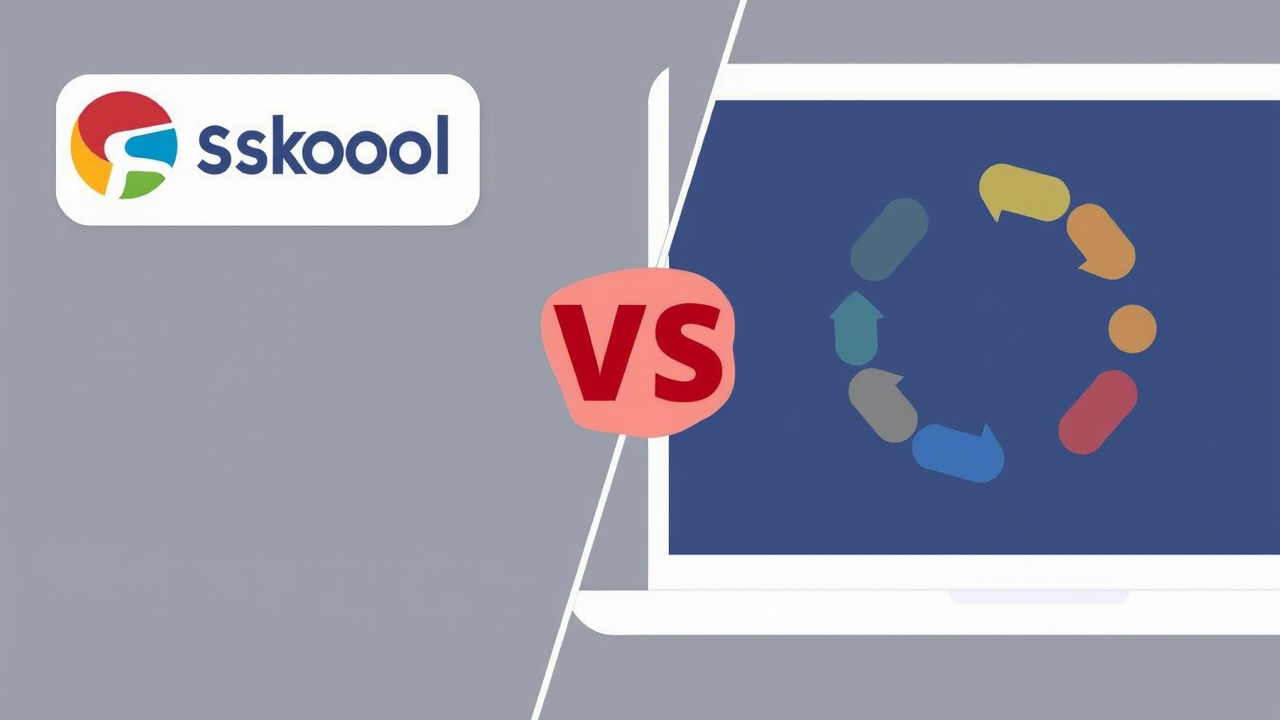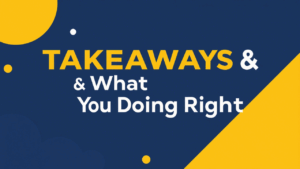If you’ve been wondering whether to build your community on Skool or Circle, you’re not alone—I’ve already been asked this question multiple times this year.
Since I personally use both the platforms, I can provide you with an inside perspective. I’ve used both versions of the tool and have community experience under both free and paid plans. Let me share with you what I’ve found so that you can make the most informed decision for your community.
My Journey with Circle and Skool
I initially started on Circle in 2017 but transitioned to Facebook by 2022, bringing all my audience along. I then collaborated with a friend to create a high-ticket program for doctors. To ensure we used the ideal platform, I returned to exploring Circle once again—and that’s when the whole transition took place.
After being brought up to speed on what Circle had been doing during my absence, I switched to an annual plan in an instant. And indeed, I was shocked at all that I’d missed. Circle had gone the extra mile and become so much more powerful and feature-rich than I’d left it.
Now I’m sharing what I’ve learned—because when folks ask me what platform to use, my response is different.
Pricing Breakdown
Let’s put this aside:
- Circle Basic Plan: $89/month (annual billing)
- Skool: $99/month (no annual billing option)
Even at the low end, Circle has more functionality—and it saves you money in the long term by eliminating third-party tools. I personally use Circle’s basic plan, so that’s what I’ll be comparing here.
P.S. I’m an affiliate of both websites. Although Skool offers more in commissions, I’m recommending Circle because it’s more value, not commissions.
What Both Skool and Circle Offer
This is what you’ll have with either platform:
- Unlimited members
- Course hosting
- Community feed
- Event scheduling
- Gamification features
- Upsell capabilities
- Free and paid membership tiers
- Zapier integrations
- Affiliate program support
- Email capture
These are the must-have features of both tools—but that’s where they stop.
Why Circle Wins (By a Lot)
Circle just does more, is more flexible, and finally is less expensive when taking into account third-party cost savings on tools. The following is the lowdown on why Circle surpasses—and it’s a long one.
- Native Live Streams & Webinars – Native live streaming comes with Circle and earns me $240/year in third-party tool cost savings on tools such as Streamyard. Third-party tools (Zoom, YouTube, etc.) are necessary in Skool.
- Video Hosting Included – Skool forces you to host videos in the external (YouTube/Vimeo), but Circle allows direct upload—$500+ saved annually in hosting costs.
- Custom Domains – All Skool communities live at skool.com/your-group. With Circle, you can host on your own custom or subdomain—e.g., community.yoursite.com.
- Rich Text and Layout Options – Skool has limited text styling on posts. Circle has fully customizable styling, media-rich posts, and layout options (feed, card, or list styles).
- Multiple Pricing Levels – Skool has only one price per cohort. Circle allows you to have multiple price levels for more sophisticated monetization.
- Full Email Marketing Suite – Circle has an email tool integrated (included for up to 100 contacts). You can send targeted emails, automate workflows, and handle CRM—all within the app. Skool has only one email every 72 hours, and it has to be a post.
- Master Member Directory – Circle has a full, filterable member list with deep profiles (default on base plan, custom fields on add-ons). Skool’s member list is blank and useless.
- One-to-Many Direct Messaging – Circle allows you to send a message to your whole list or to groups of members. Skool only offers one-on-one messaging—insufficient at scale.
- Commenting on Course Content – Skool does not natively support questioning within course lessons. Circle does, and that naturalizes course interactions and makes them richer.
- Segmented Conversation Spaces – Skool has just a single feed. Circle allows you to have individual spaces and channels for organized, topic-based conversations.
- Discount & Coupon Support – Circle supports coupons and discounts—something marketing relies on. Skool does not have such support at all.
- Brandable, Customizable Look – All communities in Skool look identical. Circle allows you to have a tailored visual look with brand colors and settings that you can customize.
- Branded Gamification – Both facilitate gamification, but one in Skool is pre-configured. In Circle, you can customize points and rewards based on your community goals.
- Advanced AI Features (Available only on Circle) – Circle does include AI features even on the lower-cost plan—like feed summarization, content suggestions, and captioning of videos. Skool has no AI features currently.
Where Skool Is Better Than Circle
Let’s be real—Skool does have some areas where it beats Circle:
- Community Discovery: Skool does include an embedded list of public groups (optional), which can draw more organic traffic.
- Simplicity: Skool is easier to get going out of the box. Less configuration, less functionality, quicker.
- Lower Transaction Fees (kind of): Skool’s are flat. Circle’s cheapest plan is 2% + Stripe fees, which can be a pain unless you’re on a more expensive plan tier.
And Skool’s minimalistic interface might also suit creators who don’t need all the bells and whistles.
Final Verdict: Circle Is the Better Platform
Both are great—but Circle is the bigger, better, cheaper deal.
I’m still trapped in Skool with some classmates just because I’d grown accustomed to it. But when I returned to Circle and saw how much further it’d progressed, there was no question in my mind that it was worth more.
If you’re serious about holding the line on building a successful, professional network—and having full control over price, design, video hosting, email, and messaging—Circle is your way.
And if you’re already on Skool, it’s easy to switch over. Circle has migration assistance to help make the switch simple to bring over your content and members.




